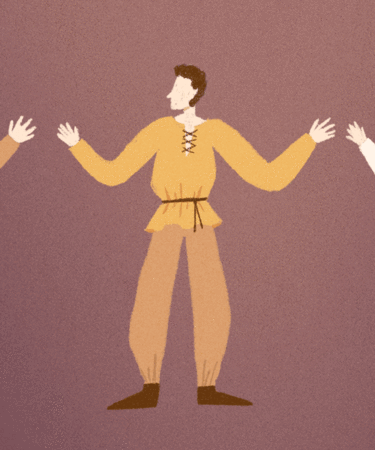For anyone who has experienced the aftermath of overindulging in alcohol, the next day’s headache alone can be torture. But for citizens of 16th-and 17th-century England, binge drinking and bad behavior often led to a punishment far worse than a hangover — or, at least, more embarrassing than the usual symptoms.
According to Ian Spencer Hornsey, author of the 2003 book, “A History of Beer and Brewing,” Parliament attempted to regulate alcohol consumption by passing the Ale Houses Act, which deemed drunkenness a civil offense. A number of statutes “aimed at preventing or punishing drunkenness” were established to make examples of those who broke the law. One such method was the “Drunkard’s Cloak,” requiring a person with multiple convictions for public intoxication to wear a wooden barrel around their body — as one would wear a shirt, with holes for their head and arms carved out.
“A first-time arrest for drunkenness was met with a simple fine of 5 [shillings], but subsequent arrests on the same charge would condemn the inebriate to wear a ‘Drunkard’s Cloak’ — a beer keg with one end knocked out and a hole cut in the other large enough for the miscreant’s head to fit through,” authors Mark P. Donnelly and Daniel Diehl write in the ominously titled “Big Book of Pain: Torture & Punishment Through History.” Authors Donnelly and Diehl discuss the use of the Drunkard’s Cloak at the beginning of the 17th century under the reign of King James I of England, explaining the king was known for imposing punishments that were “bizarrely tailored to suit the particular crime.”
Not only was the empty beer cask extremely heavy, but it was to be worn by the offender in public, sometimes for hours at a time. The accused was often further humiliated by being paraded through the streets, forced to endure the townsfolk’s contempt and hostilities.
While the cloak appears to have been employed across Europe, this punishment eventually made its way across the Atlantic. In “Curious Punishments of Bygone Days,” author Alice Morse Earle notes that soldiers during the American Civil War found themselves the unfortunate recipients of the infamous “barrel-shirt.”
Earle mentions a lieutenant in the Maine infantry volunteers, who, in 1863, wrote, “… two of my company were drunk, and the next day I had a hole cut in the head of a barrel, and put a placard on each side to tell the bearer that ‘I am wearing this for getting drunk,’ and with this they marched through the streets of the regiment four hours each.” The same lieutenant believed his method had a positive effect, adding, “I don’t believe they will get drunk again very soon.”
